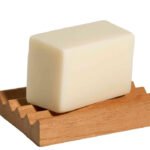What Is a Tortellinatrice?
A tortellinatrice is a specialized pasta-making machine that automates the intricate process of forming, folding, and sealing tortellini—one of Italy’s most beloved stuffed pastas. Designed to replicate the precision and delicacy of handmade tortellini, this machine makes it possible for home cooks, professional chefs, and commercial manufacturers to produce high-quality, consistent tortellini in a fraction of the time.
While traditional tortellini requires manual rolling, filling, shaping, and sealing, the tortellinatrice simplifies all these steps into one efficient, streamlined operation. What sets it apart from other pasta tools like extruders or ravioli presses is its focus on replicating the delicate crescent or ring shape of tortellini with perfectly portioned filling and consistent size. This makes it a favorite not only in Italian homes but also in restaurants, pasta shops, and even large-scale food production settings that value both authenticity and efficiency.
A Brief History of Tortellini and the Tortellinatrice
Origins of Tortellini in Emilia-Romagna
Tortellini traces its roots back to the Emilia-Romagna region of Northern Italy, particularly Bologna and Modena—two cities often at the center of debates over its true origin. These small, ring-shaped stuffed pastas have long been a culinary symbol of Italian heritage. Legends abound, including one myth that tortellini were inspired by the navel of Venus, the Roman goddess of love. Historically, tortellini were handmade during holidays and special occasions, with families gathering in kitchens to shape each delicate piece by hand. The cultural significance of tortellini runs deep in Italian tradition, where they are often served in rich broths during festive gatherings and passed down through generations as cherished recipes.
The Birth of the Tortellinatrice
As the popularity of tortellini grew throughout Italy and beyond, so too did the need for a faster, more consistent way to produce them. This gave rise to the tortellinatrice during the mid-20th century, a time when mechanical kitchen tools were gaining popularity. Initially found in artisanal pasta workshops, early tortellinatrici were manual or semi-manual devices that still required some hands-on operation but significantly reduced labor time. These early machines allowed small pasta businesses to increase output while maintaining the hand-crafted feel of their products.
From Handcrafted to High-Tech
Over the decades, the tortellinatrice evolved from a simple manual press to an advanced, motorized machine capable of producing hundreds or even thousands of tortellini per hour. As technological innovations progressed, newer models were built with stainless steel components, precision controls, and digital interfaces. The result is a fusion of traditional pasta craftsmanship with modern-day convenience. Today, whether in a small trattoria or a major pasta production facility, the tortellinatrice plays a key role in keeping the art of tortellini-making alive—bridging Italy’s rich culinary past with its future.
How the Tortellinatrice Works – Step-by-Step Process
The tortellinatrice simplifies the tortellini-making process into a series of mechanical steps that mimic the hand-forming techniques used by Italian nonnas. The process begins with preparing fresh pasta dough and your desired filling—whether that be ricotta and spinach, meat, pumpkin, or truffle blends. The machine starts by feeding pasta sheets into its rollers, which flatten the dough to a uniform thickness optimal for folding. Once the dough is flattened, the filling is precisely dispensed at calculated intervals. As the filled dough moves through the machine, a mechanical arm or shaping mold folds the pasta over the filling, seals the edges, and cuts the tortellini into perfect shapes.
| Step | Description | Purpose |
|---|---|---|
| 1. | Dough Feeding | Creates base for shaping |
| 2. | Filling Dispensing | Adds consistent flavor core |
| 3. | Folding & Sealing | Encases filling securely |
| 4. | Cutting | Produces uniform tortellini |
Modern tortellinatrici also include adjustable settings for dough thickness, shape size, and filling volume. Additionally, many models come with dishwasher-safe, removable parts that make cleaning up just as easy as the cooking process.
Types of Tortellinatrice – From Manual to Industrial
Manual Tortellinatrice
Manual tortellinatrici are ideal for traditionalists who enjoy the tactile experience of making pasta. These simple, crank-style tools offer control and intimacy, making them perfect for personal use or small batches. They’re compact, cost-effective, and often built with nostalgic charm, though they do require more physical effort and time.
Semi-Automatic Models
Semi-automatic tortellinatrici strike a balance between manual operation and mechanical efficiency. These models are especially popular in artisanal shops and small restaurants that want to maintain a handcrafted touch while increasing production speed. The operator feeds dough and filling into the machine, and the device takes over the folding and cutting process.
Fully Automatic Machines
These industrial-grade machines are found in large pasta production facilities. Designed for speed and scale, fully automatic tortellinatrici can produce thousands of tortellini per hour with high precision. They often integrate with conveyor belts, packaging systems, and drying chambers—making them ideal for mass production without sacrificing quality.
Home-Use Tortellinatrice
In recent years, countertop-friendly models have emerged for home kitchens. Compact, user-friendly, and often multi-functional, these machines can make not only tortellini but also other shapes like ravioli or agnolotti. Pasta enthusiasts who love experimenting with fillings and flavors will find home-use tortellinatrici to be an invaluable asset.
Key Features to Look For in a Tortellinatrice
When buying a tortellinatrice, several factors must be taken into account to ensure it fits your kitchen style, usage frequency, and performance expectations. The construction material is one of the most important features. Stainless steel models offer superior durability, hygiene, and resistance to wear, making them ideal for frequent or commercial use. Plastic versions, on the other hand, are lightweight and easier to clean, often favored for home kitchens.
Capacity and size also matter. Smaller machines are perfect for occasional use and easier to store, while larger machines are designed for batch cooking or professional use. Ease of use is equally critical—machines with intuitive interfaces, instructional guides, or programmable settings make a big difference for beginners. Adjustable settings, such as filling volume and pasta thickness, allow for culinary customization. Lastly, consider pricing and warranties. Investing in a trusted brand with customer support and spare parts availability can save money in the long term.
Benefits of Using a Tortellinatrice
The advantages of using a tortellinatrice are numerous, especially for those who want to enjoy the elegance of Italian cuisine without spending hours in the kitchen. The most obvious benefit is time savings—the machine dramatically cuts down the time it takes to form, seal, and cut each tortellino. This efficiency is especially beneficial during large gatherings, restaurant service, or meal prep days. Another advantage is consistency. A tortellinatrice produces uniform pieces every time, which not only enhances presentation but also ensures even cooking.
From a culinary standpoint, the machine allows for greater experimentation. You can easily switch fillings to match dietary needs, like gluten-free or vegan recipes. It also provides a fun and collaborative experience—many families use these machines for weekend cooking sessions or holiday prep. Moreover, the ability to prepare fresh tortellini with real ingredients at home enhances both flavor and nutritional value. Ultimately, the tortellinatrice is a tool that empowers cooks of all skill levels to create delicious, restaurant-quality pasta with ease.
Maintenance and Care Tips for Your Tortellinatrice
Keeping your tortellinatrice in good working condition ensures long-term functionality and hygienic operation. After each use, begin by wiping down the machine with a damp cloth to remove flour and dough residue. If the model includes removable components, wash them in warm, soapy water or place them in the dishwasher if permitted. Avoid abrasive cleaners or chemicals that could damage surfaces or moving parts.
For long-term care, periodically inspect gears and rollers for wear and apply food-safe lubricant if the manual recommends it. Always store the machine in a dry, dust-free environment to prevent corrosion or rust. Troubleshooting common issues is also part of proper maintenance—check for loose seals, misaligned rollers, or clogs in the filling dispenser. Refer to your user manual for brand-specific cleaning steps, and keep spare parts or maintenance kits handy if the model supports them.
Traditional & Modern Recipes to Try with Tortellini
Homemade tortellini opens the door to a variety of classic and innovative Italian dishes. The most traditional is Tortellini in Brodo, a comforting bowl of pasta served in hot chicken or beef broth—perfect for winter nights or festive dinners. Another well-loved variation is Tortellini alla Panna, where pasta is coated in a rich cream sauce with grated parmesan and a touch of nutmeg.
For vegetarians, Spinach and Ricotta Tortellini with Sage Butter offers a fragrant and flavorful option that highlights the freshness of your ingredients. If you’re cooking for a family, consider a Tortellini Casserole Bake layered with marinara, mozzarella, and a crispy golden topping. These dishes not only showcase the versatility of tortellini but also reflect how the tortellinatrice can elevate your home cooking to gourmet levels.
Final Thoughts
The tortellinatrice is more than a pasta machine—it’s a celebration of Italian culinary artistry made accessible to everyone. Whether you’re a seasoned chef looking to expand production or a home cook exploring your love for authentic Italian food, this tool offers unmatched value. It preserves the tradition of tortellini-making while providing the convenience and precision needed in modern kitchens. With the right care, model, and creativity, a tortellinatrice transforms ordinary meals into extraordinary experiences. In the world of pasta-making, where love, technique, and flavor matter most, the tortellinatrice stands as a testament to innovation without compromise.
FAQs About Tortellinatrice
1. What is a tortellinatrice used for?
A tortellinatrice is a pasta-making machine used to create tortellini. It automatically folds, fills, and seals pasta dough, making it faster and easier to produce perfect tortellini at home or in restaurants.
2. Can I use a tortellinatrice at home?
Yes, many compact tortellinatrice models are designed for home use. They are easy to operate, clean, and allow you to make fresh homemade tortellini using your favorite fillings and ingredients.
3. What are the benefits of using a tortellinatrice?
A tortellinatrice saves time, ensures uniform tortellini shapes, and keeps the authentic taste of handmade pasta. It also lets you experiment with different fillings and enjoy fresh, high-quality pasta anytime.
4. How do I clean a tortellinatrice?
Most tortellinatrice machines come with detachable parts that can be washed with warm soapy water or placed in a dishwasher. After each use, wipe the main body with a damp cloth to remove flour and dough residue.
5. Is a tortellinatrice worth buying?
Yes, a tortellinatrice is a great investment for pasta lovers. It combines traditional Italian craftsmanship with modern convenience, helping you make delicious tortellini quickly, consistently, and with minimal effort.
For More Information, Visit Celebritymagazine













